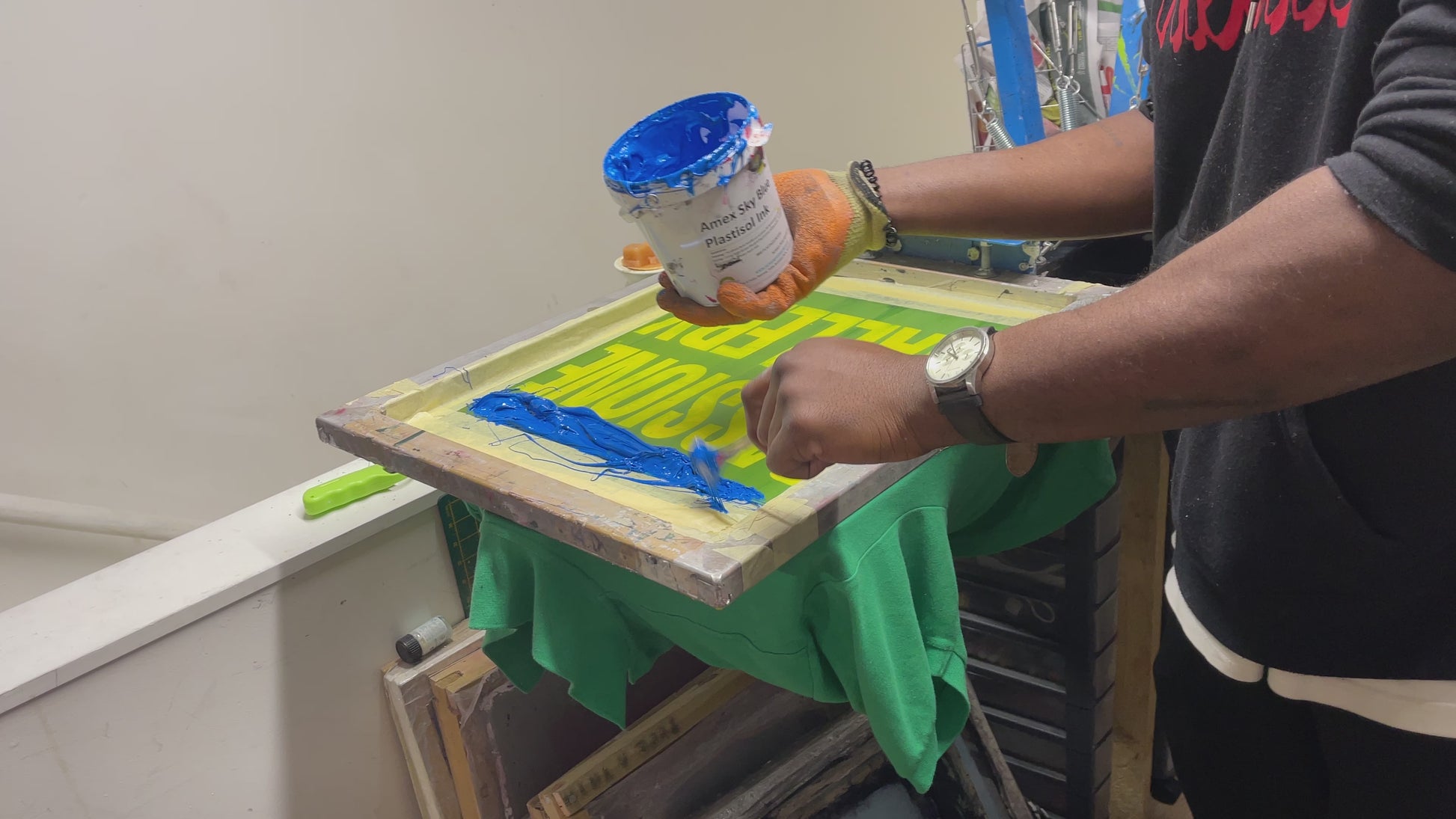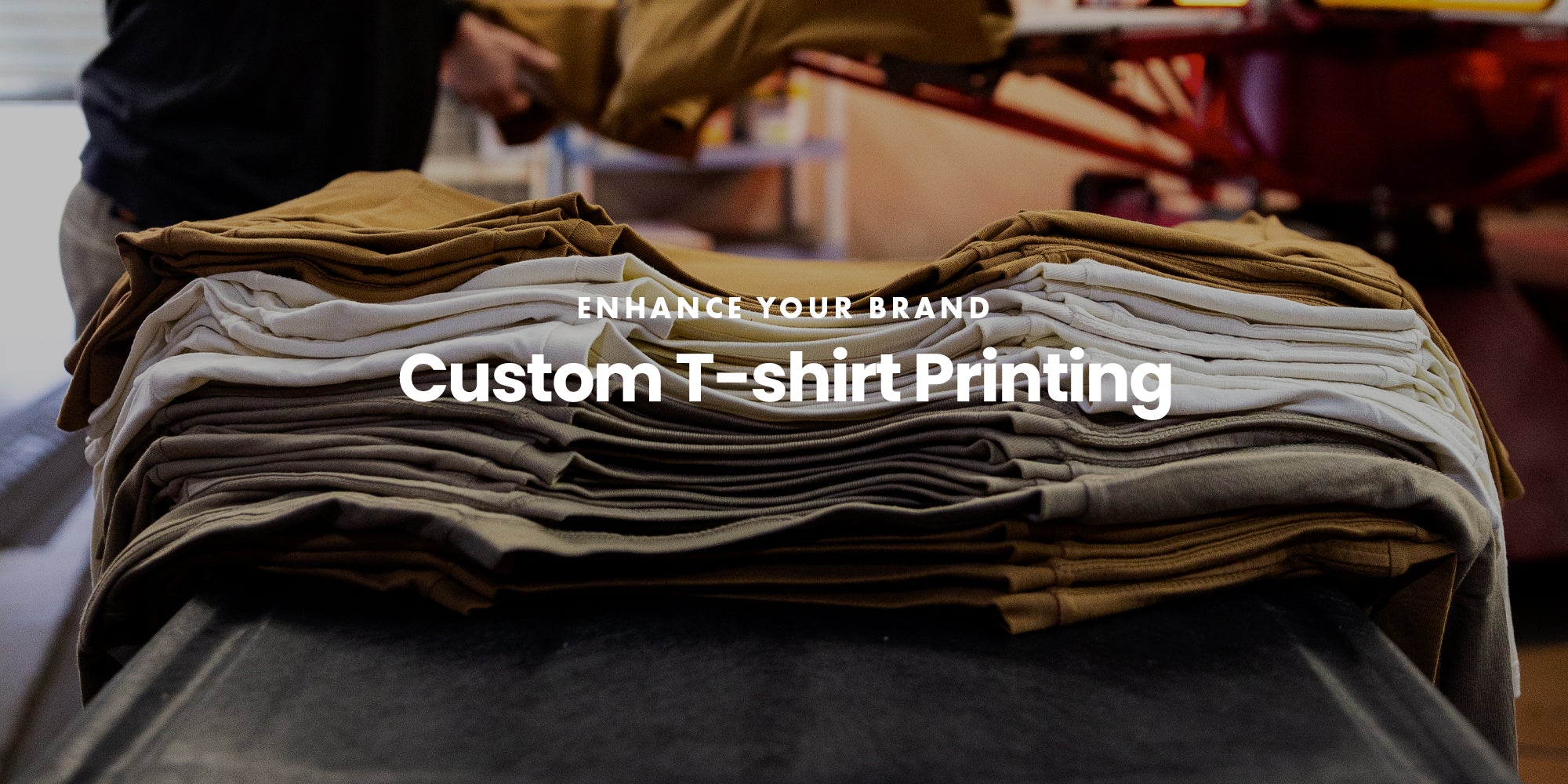Creative T-Shirt Printing Ideas for Small Brands
Wiki Article
Mastering Silk Display Printing: Advice for Creating Stunning Designs
If you're looking to master silk display printing, you'll need more than simply enthusiasm. By the end, you'll be all set to create stunning styles that reflect your unique design.Recognizing the Basics of Silk Display Printing
Silk display printing, often called display printing, is a flexible approach for moving layouts onto various materials. You'll locate it's excellent for printing on fabrics, paper, plastic, and much more. The process entails developing a stencil, or display, that permits ink to travel through only in details areas, creating vivid and tidy layouts.To start, you'll require to prepare your artwork, guaranteeing it's in a suitable format. screen printing kit. You'll layer your display with a light-sensitive emulsion and subject it to light once you have actually obtained your design prepared. This step develops a pattern of your design on the display
After rinsing the unexposed solution, you're set to print. Align your display over your material, apply ink, and utilize a squeegee to press the ink with the display. It's all concerning technique and perseverance, so do not hesitate to experiment and fine-tune your method as you go.
Vital Tools and Products You'll Require
To start with silk screen printing, you'll need a few fundamental materials like displays, squeegees, and ink. Once you fit, you can check out sophisticated equipment that boosts your printing top quality and effectiveness. Allow's look at what you'll require to ensure your jobs succeed from the start.Fundamental Silk Screen Supplies
Beginning on a silk screen printing task needs a couple of necessary devices and products to assure your success. You'll need a silk screen frame, which holds the mesh that transfers your layout. A squeegee is important for pushing ink with the display onto your substrate. Do not neglect the ink itself; pick shades that fit your layout and the material you're publishing on. A source of light is essential for subjecting your screen, together with solution to develop your pattern. You'll also need a proper work space, preferably one that's cost-free and well-lit from dust. Ultimately, stock up on cleaning materials to preserve your devices and keep your displays in excellent condition. With these essentials, you prepare to plunge into your job!Advanced Printing Devices
When you're prepared to take your silk display printing to the next degree, purchasing advanced printing equipment can make a substantial difference. A premium display printing machine is vital; seek a multi-color press that permits exact enrollment and quicker manufacturing. You'll also desire to upgrade to an extra effective direct exposure unit to ensure your layouts are sharp and dynamic.Take into consideration purchasing a trustworthy heat source, like a conveyor clothes dryer, for even curing of inks. Don't fail to remember regarding specialized inks; water-based and discharge inks supply exceptional outcomes on various materials. Lastly, a good collection of mops and solution scoop coater will streamline your procedure, providing your designs that specialist side.
Preparing Your Art Work for Printing
Preparing your artwork for silk display printing is important to achieving vivid, expert outcomes. Start by verifying your layout remains in the best format-- vector data like.AI or.EPS job best. In this manner, your art work keeps quality at any kind of dimension. Next off, inspect the shade setting; usage CMYK for accurate color representation.Once your file prepares, create a separate layer for every color in your design. This'll make it easier throughout the printing procedure. Do not neglect to include registration marks to line up shades properly.
Likewise, consider the mesh matter of your screen; better information may need a greater mesh matter. Finally, conserve your artwork with a resolution of a minimum of 300 DPI to guarantee crisp prints. By complying with these actions, you'll set yourself up for a successful printing experience and bring your designs to life magnificently.
The Screen Printing Refine: Step-by-Step
Currently that you've prepared your art work, it's time to concentrate on the display printing procedure itself. You'll begin by preparing your screen, guaranteeing it's ready for the ink application. From there, you'll check out different printing techniques to accomplish the finest outcomes for your project.Preparing Your Screen
Getting your screen all set is a vital step in the silk screen printing process. Once completely dry, put your openness on the display and make use of a light source to subject the style. After direct exposure, clean out the unexposed emulsion, and you'll have your screen prepared for printing.Printing Methods Clarified
Once your display prepares, you can plunge right into the amazing procedure of printing. Location your screen on your substrate-- whether it's material, paper, or an additional product. Safeguard it to stop any kind of activity. Next off, pour your ink onto one side of the screen and utilize a squeegee to pull the ink throughout the layout. Apply even push to assure the ink penetrates via the mesh. Raise the display meticulously to disclose your print. If you're layering colors, let each layer dry prior to applying the next. Clean your display without delay to stop ink from blocking the mesh and drying. With technique, you'll understand the nuances of stress and timing, which will certainly assist you attain crisp, dynamic layouts.Tips for Getting Vibrant Colors
While accomplishing dynamic colors in silk display printing may appear tough, you can conveniently elevate your designs with a few crucial techniques. Select high-grade inks specifically made for silk display printing; they offer much better coloring and coverage. Blending inks properly can likewise boost vibrancy-- explore ratios to find the excellent blend that pops.
Lastly, don't forget healing your prints appropriately. Proper warmth setting guarantees the colors bond with the material, maintaining their vibrancy gradually. By executing these methods, you'll produce magnificent, appealing styles that truly shine.
Fixing Usual Printing Issues
Despite vivid shades in your layouts, silk display printing can sometimes offer challenges. One typical issue is ink blood loss, which usually happens when you utilize too much ink or don't let the previous layer dry totally. To prevent this, utilize a squeegee with simply the ideal pressure and assure each layer is dry before including more.If your style isn't lining up correctly, confirm your registration marks and make changes to your displays. Tidy your screens completely before beginning your print run.
Lastly, if the ink isn't adhering well to the fabric, think about the textile type and the treating procedure. Make certain you're making use of the ideal ink and that you're curing it at the proper temperature. Repairing these usual issues will help you attain spectacular outcomes.
Trying out Effects and methods
Experimenting with different techniques and effects can elevate your silk screen printing tasks to new elevations. Do not be scared to push limits! Attempt layering colors for deepness; overlapping colors develops special blends that catch the eye. You can also play with textures-- making use of different squeegee techniques or incorporating materials like sponges or brushes includes dimension to your prints.Consider using specialized inks, such as metal or glow-in-the-dark, to give your styles an unanticipated twist. You may even check out stenciling, where you can reduce intricate layouts for stunning impacts.
Don't ignore substrate variants! Printing on materials, wood, or paper can produce different outcomes that enhance your project's feeling.
Finally, maintain a journal of your experiments. Documenting your successes and failures will certainly assist your future productions and help you fine-tune your style. Welcome the process, and appreciate the journey of discovering what works best for you!
Often Asked Questions
Exactly how Do I Tidy and Keep My Screen Printing Equipment?
To cleanse and maintain your display printing devices, frequently scrub displays with a suitable cleaner, laundry mops after usage, and shop whatever in a dry, dust-free environment. Keeping points neat assurances better prints and longer-lasting devices.
Can I Publish on Products Other Than Material?
Yes, you can publish on materials besides material! Think about utilizing paper, plastic, or timber. Simply see to it your inks and screens are suitable with those surfaces for the very best outcomes. Experiment and enjoy!What Is the most effective Method to Store Screens and Inks?
To keep inks and displays efficiently, maintain displays upright in a cool, completely dry area, and cover them to stop dust. Shop inks in airtight containers, away from direct sunlight, to preserve their top quality and uniformity.Exactly how Do I Pick the Right Mesh Matter for My Job?
Choosing the appropriate mesh matter depends on your layout's information and ink type. For great details, go higher, like 200 mesh (screen printing kit). For bold layouts, a reduced matter, around 110, functions finest. Experiment to find your perfect match.What Are the Environmental Impacts of Silk Screen Printing?
Silk screen printing can have environmental impacts, like chemical waste and water use. You can reduce these by utilizing green inks, reusing materials, and correctly taking care of chemicals to minimize your project's eco-friendly impact.Silk display printing, usually called screen printing, is a flexible method for transferring designs onto different materials. Align your screen over your product, apply ink, and make use of a squeegee to push the ink via the screen.To obtain begun with silk display printing, you'll need a couple of standard products like screens, squeegees, garment printing and ink.When you're ready to take your silk display printing to the next level, spending in advanced printing tools can make a substantial difference.Getting your display all set is an essential action in the silk screen printing procedure.
Report this wiki page